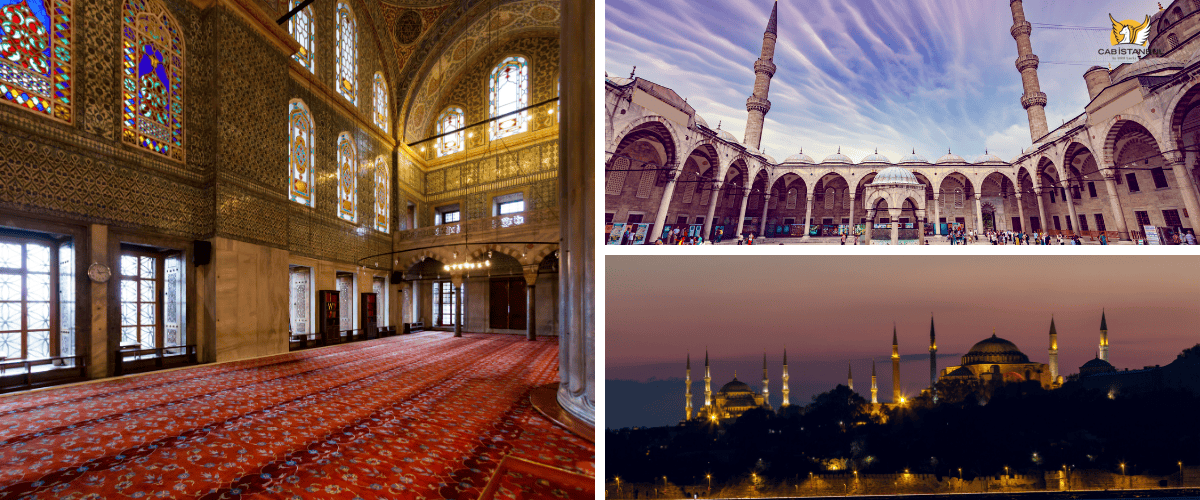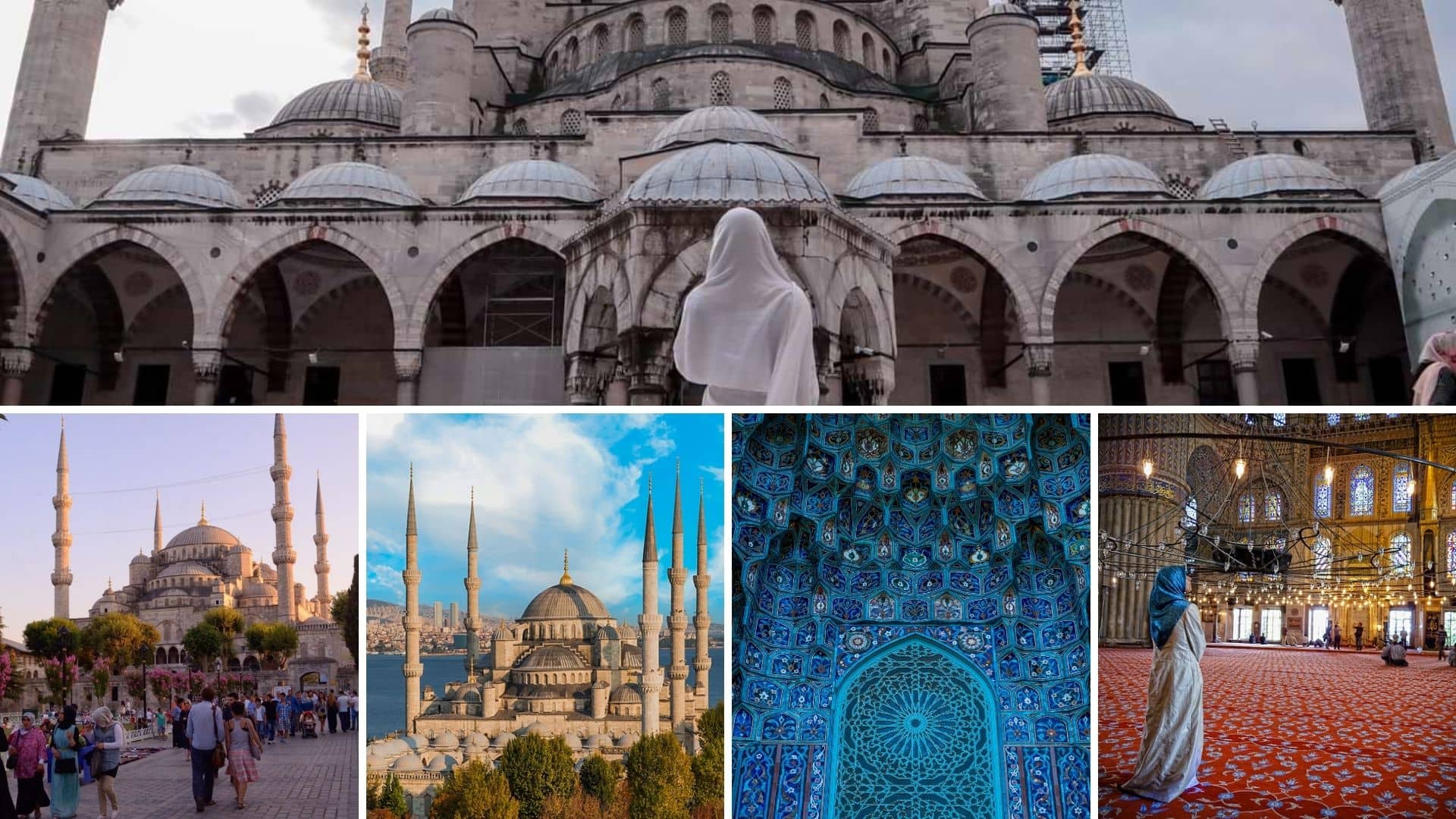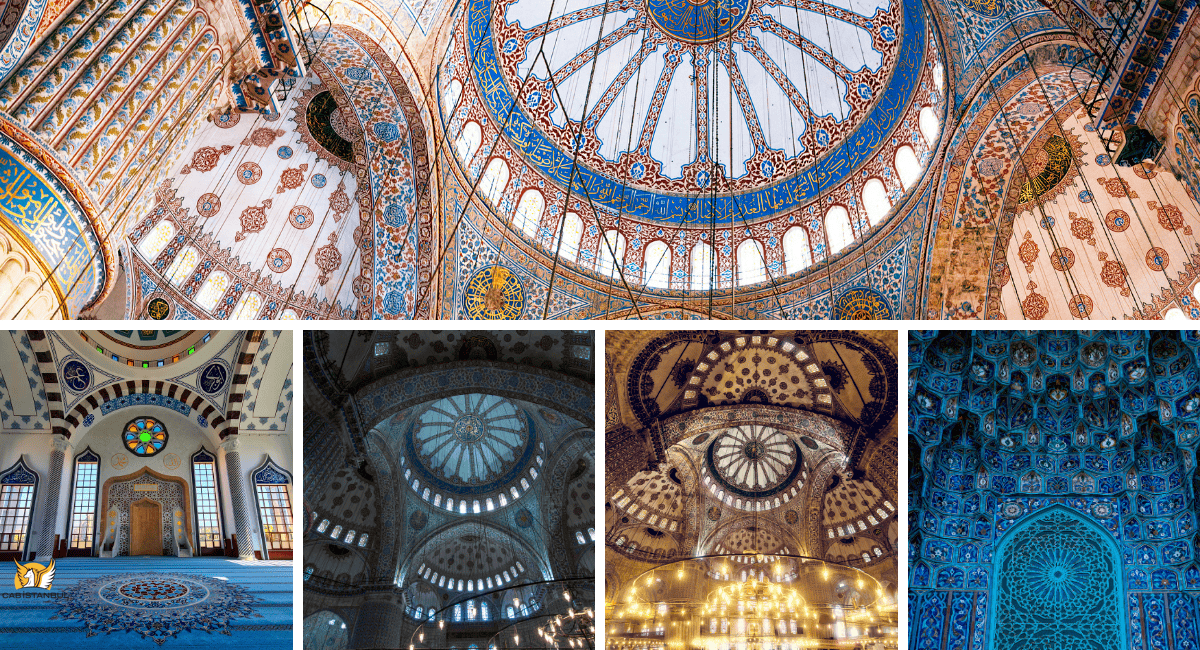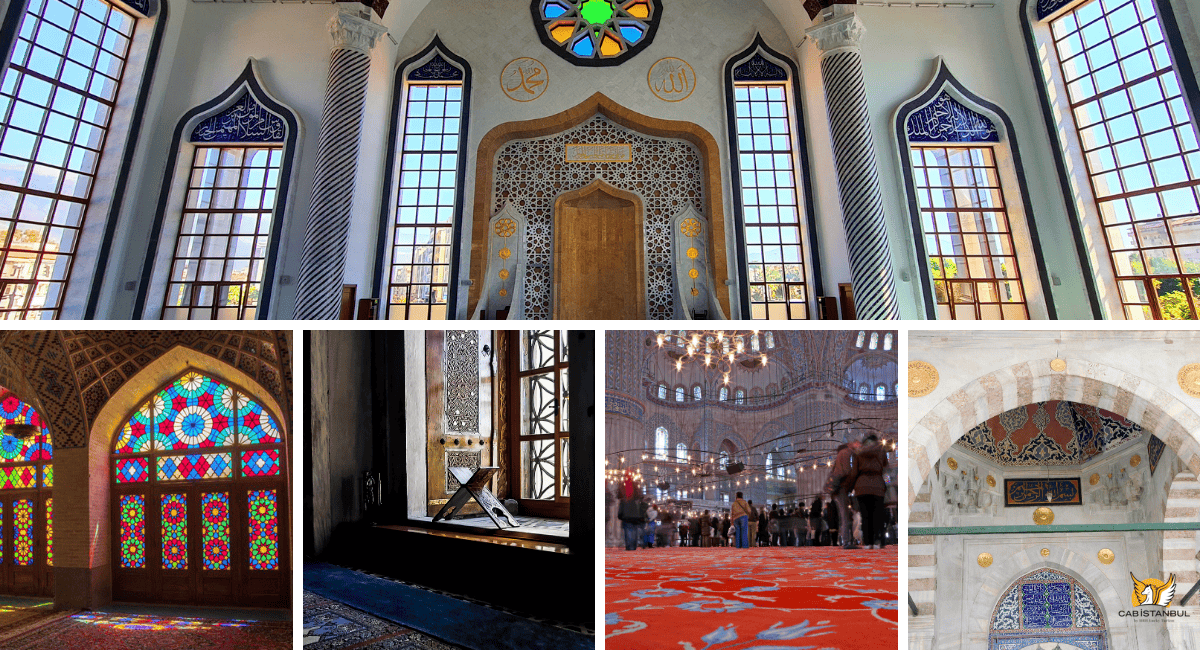The Blue Mosque
2026-01-02

Visit Blue Mosque
Explore the breathtaking Blue Mosque (Sultan Ahmed Mosque), an iconic symbol of Istanbul and a masterpiece of Ottoman architecture. Constructed between 1609 and 1617 under Sultan Ahmed I, this majestic mosque enchants visitors with its six towering minarets, vast central dome, and intricately adorned interiors featuring over 20,000 hand-painted blue Iznik tiles. A UNESCO World Heritage site, the mosque’s grandeur is matched by its historical and cultural significance. Nestled in the heart of Sultanahmet, it stands opposite the Hagia Sophia and near the historic Hippodrome, embodying the spiritual and architectural heritage of the Ottoman Empire.
The Blue Mosque not only serves as a place of worship but also as a testament to the ingenuity and artistry of its time. Its külliye complex includes Ahmed I’s tomb, a madrasa, and public facilities, reflecting its multifaceted role in Ottoman society. The harmonious blend of classical Ottoman design and Islamic artistry creates a serene ambiance that leaves visitors in awe. Stroll through its expansive courtyard, marvel at its intricate calligraphy, and soak in the historical atmosphere of Sultanahmet Square. A visit to the Blue Mosque is a journey through Istanbul’s illustrious past and a celebration of timeless beauty.
To thoroughly explore Istanbul's essential sights, consider hiring a chauffeured vehicle with a multilingual driver fluent in either Arabic or English. Secure your airport transfer today for a seamless experience.
The Blue Mosque In Istanbul Turkey
Blue Mosque Istanbul
Blue Mosque Istanbul, while the city boasts over 3,000 mosques, the Blue Mosque's unparalleled aesthetic appeal sets it apart. Other prominent mosques like the Suleymaniye Mosque, Rüstem Pasha Mosque, and Ortaköy Mosque each have their significance, but the Blue Mosque's historical context and proximity to the Hagia Sophia lend it unique prominence. Sultan Ahmed I, the visionary behind its construction, ensured that it stood out with its six minarets, a feature unseen in any other mosque. Adorned with over 20,000 Iznik tiles that ascend skyward, its blue-tinted tiles have led foreigners to affectionately dub it the "Blue Mosque".
Blue Mosque And Hagia Sophia
Blue Mosque, showcases a design evolution spanning two centuries. It boasts a primary dome, flanked by six minarets and complemented by eight secondary domes. Drawing inspiration from the neighboring Hagia Sophia's Christian architectural style and traditional Islamic motifs, the Blue Mosque stands as the epitome of the classical era's architectural marvels. Its architect, Sedefkar Mehmed Agha, seamlessly blended the genius of master architect Sinan, emphasizing grandeur and magnificence. Visitors are kindly reminded to maintain social distancing during their shopping endeavors amidst the ongoing pandemic.
Blue Masjid
Blue Masjid, egarded as one of Turkey's most significant mosques, the Sultanahmet Mosque in Istanbul is often referred to as the Blue Mosque due to its blue Nicaea tile-adorned interiors. These unique ceramics, sourced from the city of Nicaea, are complemented by over fifty diverse daisy designs that grace the mosque's lower levels and internal pillars. In total, over 20,000 traditional Anatolian-style ceramics beautify the space, bearing floral, fruity, and cypress motifs. These ceramics stand as a testament to the unmatched craftsmanship of Nicaea's finest artisans.
Blue Mosque Inside
Blue mosque inside The mosque's upper echelons are dominated by shades of blue. Over 200 intricately designed windows, now further illuminated by chandeliers, allow natural light to permeate the interior. An interesting feature of the chandeliers is the presence of ostrich eggs, believed to repel spiders and prevent cobwebs. The walls are graced with Quranic verses, exquisitely penned by the legendary calligrapher, Sayyid Kasim Gubari. The mosque's floors are carpeted with generous donations from devotees, with the vast windows amplifying the ambiance. Notably, the central dome's 28 ornate windows, a gift from the Venetian Signoria, have been replaced over time, losing some of their original artistic essence.
The Mihrab of the Blue Mosque
At the mosque's heart lies the Mihrab, an exquisitely carved marble centerpiece with a stalactite niche and dual inscriptions. It's further accentuated by surrounding windows and ceramic tiles adorning adjacent walls. To the Mihrab's right stands a lavishly ornamented pulpit, where the imam delivers sermons during Friday prayers and sacred occasions.
Sultan Ahmed Mosque

Blue Mosque History
Masjid Sultan Ahmed, the elevated dome features an abundance of windows, bathing the intricate tiles and craftsmanship within in a gentle luminance. However, with the absence of the era's original plaster windows, the light has lost some of its ethereal quality. The mosque's left corner houses the sultan's loge, boasting a mosaic and jade-embellished mihrab, a mother-of-pearl door, and gilded tiles set against a turquoise backdrop—unparalleled in their beauty. The mihrab's pristine cyan tiles, the simple yet refined embroidery, the gilded floral motifs, and the jade detailing collectively elevate the mosque's ornamental magnificence.
Masjid Sultan Ahmed
The sultan's domes, situated in the southeast corner, comprise a platform, an entrance porch, and two annexed rooms. They grant access to the royal passageway in the mosque's upper gallery. Historically, these chambers served as the Grand Vizier's command center during the quelling of the Janissary Corps rebellion in 1826. Ten sturdy marble columns support the royal emblem. A mihrab, beautified with ancient jade roses and gold embellishments, stands prominently, accompanied by a gilded Quranic inscription.
Original calligraphy, penned by Seyyid Kasim Gubari in the 17th century, adorned the walls with names of caliphs and Quranic verses, though they've undergone multiple restorations. Once gilded and studded with jewels, many of the mosque's lamps now feature simpler designs with ostrich eggs and crystal balls, with the original ornate decorations now preserved in museums.
Interior Blue Mosque
The Tale of the Blue Mosque Minarets, legend suggests that while the Hagia Sophia aimed to surpass Jerusalem's Temple of Solomon, the Ottoman sultans aspired to outdo the Hagia Sophia with a grand architectural feat. This aspiration culminated in the Blue Mosque, boasting six minarets—a design only mirrored by the "Masjid al-Haram" in Islam's history. Yet, these six minarets sparked controversy, as they were perceived as overshadowing the Kaaba's mosque. To address this, Sultan Ahmet I commissioned a seventh minaret for the Kaaba's mosque.
Another intriguing anecdote relates to the mosque's six minarets. Allegedly, Sultan Ahmet I desired gold minarets. However, the costs exceeded his budget. A potential miscommunication led the mosque's architect, Sedefkar Mehmet Ağa, to interpret the sultan's wish for 'gold' (altın) as 'six' (altı) minarets, resulting in the mosque's unique design.
Masjid Sultan Ahmed

The Blue Mosque Location
The Blue Mosque (Sultan Ahmed Mosque) is centrally located in Istanbul’s historic Sultanahmet district, adjacent to the Hippodrome and directly facing the iconic Hagia Sophia. This prime location places it within walking distance of major attractions like the Topkapi Palace and Basilica Cistern, making it a perfect starting point for exploring Istanbul’s rich history.
Mausoleum of Sultanahmed
Located northeast of the Blue Mosque, this square-shaped mausoleum, completed in 1619, holds the tomb of Sultan Ahmed I, his wife Kösem, and four of his sons, including Sultan Osman II and Sultan Murad IV. The dome and its portico resemble a small mosque, blending Ottoman architectural elegance with solemnity.
The Madrasa and Darülkurra
The madrasa, built around 1620, features 24 domed student quarters around a central courtyard. It also includes the darülkurra, a Qur'an school, now a storage site for Ottoman archives. Together, they showcase classical Ottoman educational architecture.
Hospital and Public Kitchen
The complex once included a hospital and imaret (soup kitchen). While much of the hospital was destroyed, the hammam and marble fountain remain. The imaret’s domed pantry, kitchen, and dining hall have been preserved and integrated into Marmara University’s rectorate.
Primary School and Hammam
The primary school, a simple rectangular building, has been restored after a 1912 fire. The hammam, partly in ruins, still retains its furnace and hot room, reflecting the practical aspects of Ottoman complexes.
Arasta Bazaar
This market street below the southeast side of the mosque precinct originally housed 200 shops. Restored in the 1980s after a 1912 fire, it now operates as a vibrant bazaar catering to tourists.
Mosque Of Sultan Ahmet

Blue Mosque Istanbul Visiting Hours
The Blue Mosque (Sultan Ahmed Mosque) warmly invites visitors daily, offering a remarkable glimpse into Istanbul’s rich heritage. The mosque is open to tourists from 9:00 AM to 6:00 PM, except during prayer times when it closes temporarily for worship.
- Summer Season: 8:30 AM to 6:30 PM
- Winter Season: 8:30 AM to 5:00 PM
- Fridays: Closed to visitors until 2:30 PM for Friday prayers.
Prayer Timings (Approximate)
- Fajr (Dawn): 6:20 AM
- Sunrise: 6:37 AM
- Zuhr (Noon): 1:29 PM
- Asr (Mid-afternoon): 4:15 PM
- Maghrib (Sunset): 6:35 PM
Dress Code: Visitors are required to dress modestly, reflecting the sacred nature of the mosque. Shorts, miniskirts, sleeveless outfits, and clothing exposing shoulders are not allowed. Free coverings and headscarves are available at the entrance for those in need, ensuring adherence to Islamic customs.
Blue Mosque Istanbul Tickets
Admission to the Blue Mosque is completely free of charge. While donations are welcomed at the exit to support the mosque’s maintenance, they are entirely optional and not required. Visitors are encouraged to maintain a quiet and respectful atmosphere, honoring the spiritual significance of this iconic site. Enjoy the serene ambiance and architectural brilliance outside prayer hours at your leisure.

Write a Comment !